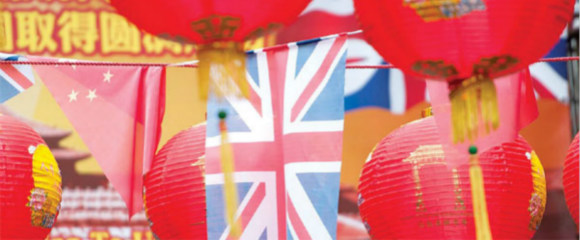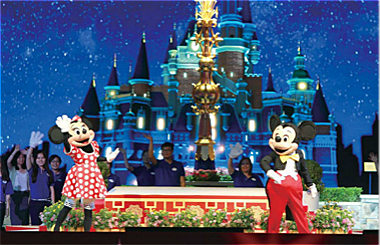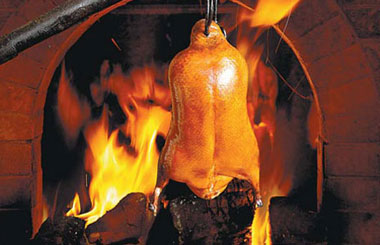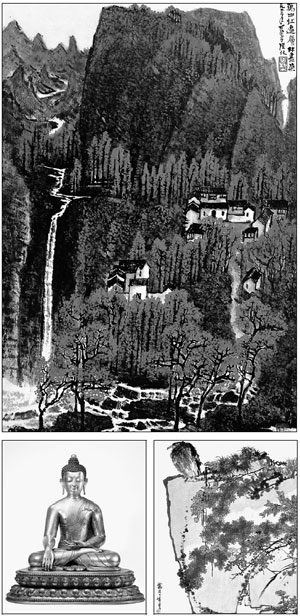New canvas to work on
Updated: 2016-01-19 08:47
By Deng Zhangyu(China Daily)
|
|||||||||||
While the country's art market has seen a decline due to an economic slowdown and the crackdown on graft, the Internet seems to offer a ray of hope, Deng Zhangyu reports.
The domestic art market saw a polarization last year when art dealers experienced a chill from the shrinking market. While small and medium-sized auction houses decreased or stopped doing business, the major ones survived on good earnings with some big-ticket sales.
Meanwhile, online auctions and online art trading seemed to offer a way out.
According to the China Association of Auctioneers, sales by auction houses last year totaled about 30 billion yuan ($4.54 billion), a 2.5 percent drop from the previous year. But the top 10 houses in China, which account for more than half of the market, saw an average decline of 15.3 percent in sales.
It was described as "the worst year since 2011" by leaders of major houses attending Sunday's Chinese Art Market Summit 2015 held by 99ys.com, and it was mostly influenced by China's economy.
"A lukewarm market has been the norm since China's art market hit a peak in 2011. The bad situation will continue this year," says Liu Shangyong, general manager of RomBon Auction, one of the country's first auction houses.
Liu says that the effect of China's crackdown on corruption on the gift-buying market, which accounted for one-third of the sales, was clearly evident. Many painters did not receive any orders last year.
But masterpieces and good-quality antiques are still in demand by big collectors, who are not short of money.
Chinese modern painter Pan Tianshou's ink-and-wash painting Eagle, Rock and Flora fetched a record price of 279 million yuan and Li Keran's painting Thousands of Hills in a Crimsoned View was sold for 184 million yuan at China Guardian last year.
Both the works sparked excitement in the Chinese market because they were a rare sight, not seen since 2011, the peak of China's art market, when its sale revenue climbed up to 57.6 billion yuan.
Other big sales included Buddha sculptures, which have continued to maintain their popularity over the years. A 14th-century sculpture of Shakyamuni fetched 103.5 million yuan at Poly Auction's autumn sale, becoming the most expensive Buddha sculpture of the year. Poly Auction is a major Chinese auction house.
Celebrities' letters - still a new category for Chinese collectors - saw unexpected popularity. From art master Zhang Daqian's love letters to his Japanese girlfriend to scripts by Kang Sheng from former vice-premier Gu Mu's collection, all went for prices which ranged from hundreds of thousand yuan to several millions.
But for auction houses, big sales don't always happen and they can't support the whole industry. So the future trend has to be about developing an art business online, including auctions and art trade, says Guan Yu, deputy director of Cultural Affairs Bureau of Beijing Municipality.
Through the Internet, art dealers can easily reach their targeted audience, especially the growing Chinese middle class that is becoming more interested in art, given the popularity of art fairs and high-quality exhibitions featuring both Western and traditional Chinese art masters last year, says Guan.
International auction houses like Christie's and Sotheby's started online auctions several years ago. There are now daily online auctions and special spots for top buyers who cannot go to bidding spots.
Sotheby's stepped into online auctions in 2010, and its recent online auction with eBay for a Star Wars memorabilia collection attracted 87 percent new bidders, says Wen Guihua, a senior consultant for Sotheby's in Asia.
But Wen says: "The market will be more segmented in 2016. While auction houses will offer services for wealthy and senior collectors, online auctions and art trading will cater to the growing middle class."
Poly Auction set up an online auction platform named Yidianchina.com in 2012. Last year, it held more than 500 auctions online and its sale revenue was more than 50 million yuan, says Qiu Tong, CEO of Yidianchina. About 20,000 subscribers bought works through them.
Qiu says: "Increasing numbers of Chinese buyers are going for online auctions and art trade. The number is spiraling.
"Art is also a commodity. So as consumption grows, the market will become huge in China."
Besides Poly Auction, other houses, galleries, companies, e-commerce sites and art media are also getting into the business.
Last year, online auctions became common, but most works sold below 50,000 yuan and were produced by young artists. But the number of buyers is colossal.
Liu, the head of RomBon Auction, says: "The Internet can accommodate hundreds of thousands of buyers at one time. But for traditional auction houses like ours, we had only about 1,000 bidders all together for the spring and autumn auctions last year.
"Big collectors like Liu Yiqian are very rare and he is a rare case. But for the mass consumption market, that's a potential and big opportunity."
Private collector Liu Yiqian made his name on the international stage with several big-ticket purchases, especially his $170 million for Modigliani's Reclining Nude at Christie's in New York in November.
Contact the writer at dengzhangyu@chinadaily.com.cn
|
China's art market last year saw some handsome sales, including Li Keran's ink painting Thousands of Hills in a Crimsoned View (top), Pan Tianshou's inkandwash painting Eagle, Rock and Flora (above right) and a 14thcentury sculpture of Shakyamuni (above left). Photos Provided To China Daily |

(China Daily 01/19/2016 page20)
Today's Top News
Xi to deliver speech on Middle East policy
AIIB chief vows to run clean, lean, green institution
Chinese firms making inroads in UK
Value addition
IS claims Jakarta attack, targets Indonesia for 1st time
Chinese people most optimistic in global survey
COSCO offers 700m euros for Greece’s Piraeus Port
Istanbul bomber entered Turkey as refugee
Hot Topics
Lunar probe , China growth forecasts, Emission rules get tougher, China seen through 'colored lens', International board,
Editor's Picks

|

|

|

|

|

|







